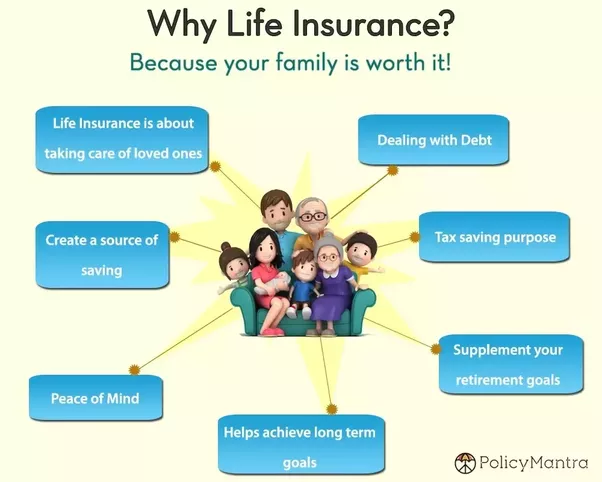The Buzz on Pacific Prime
The Buzz on Pacific Prime
Blog Article
Pacific Prime - Questions
Table of ContentsThe 30-Second Trick For Pacific PrimeThe Pacific Prime StatementsPacific Prime Can Be Fun For EveryoneThe Best Strategy To Use For Pacific PrimeHow Pacific Prime can Save You Time, Stress, and Money.

This is due to the fact that the information were collected for a period of strong financial efficiency. Of the approximated 42 million individuals who were without insurance, all but regarding 420,000 (concerning 1 percent) were under 65 years of age, the age at which most Americans end up being eligible for Medicare; 32 million were grownups in between ages 18 and 65, about 19 percent of all grownups in this age team; and 10 million were kids under 18 years old, concerning 13.9 percent of all children (Mills, 2000).
These quotes of the number of individuals without insurance are generated from the yearly March Supplement to the Current Populace Study (CPS), conducted by the Demographics Bureau. Unless otherwise noted, nationwide price quotes of people without wellness insurance and percentages of the population with various sort of insurance coverage are based on the CPS, the most extensively used source of estimates of insurance policy coverage and uninsurance prices.
Pacific Prime for Beginners

Still, the CPS is particularly helpful since it creates annual quotes fairly quickly, reporting the previous year's insurance coverage approximates each September, and due to the fact that it is the basis for a regular collection of estimates for greater than two decades, permitting for analysis of fads in insurance coverage gradually. For these factors, as well as the considerable use the CPS in various other research studies of insurance protection that are provided in this report, we depend on CPS estimates, with restrictions noted.

The quote of the number of uninsured people expands when a population's insurance condition is tracked for several years. Over a three-year period beginning early in 1993, 72 million people, 29 percent of the U.S. https://issuu.com/pacificpr1me. population, were without coverage for at the very least one month. Within a single year (1994 ), 53 million people experienced at the very least a month without insurance coverage (Bennefield, 1998a)
6 out of every 10 without insurance adults are themselves employed. Although functioning does enhance the likelihood that and one's household participants will have insurance, it is not a guarantee. Also participants of family members with two full time breadwinner have practically a one-in-ten chance of being without insurance (9.1 percent uninsured price) (Hoffman and Pohl, 2000).
Pacific Prime Fundamentals Explained
New immigrants make up a considerable percentage of people without health and wellness insurance. One evaluation has actually attributed a considerable portion of the recent growth in the size of the U.S. uninsured population to immigrants that showed up in the nation in between 1994 and 1998 (Camarota and Edwards, 2000). Current immigrants (those that involved the USA within the past 4 years) do have a high price of being uninsured (46 percent), but they and their children account for simply 6 percent of those without insurance policy across the country (Holahan et al., 2001).
The connection between wellness insurance and accessibility to care is well developed, as documented later in this chapter. The relationship between wellness insurance and wellness end results is neither straight neither straightforward, a comprehensive professional and wellness services study literary works links health insurance policy coverage to enhanced access to care, better top quality, and enhanced personal and populace wellness condition.
Degrees of analysis for checking out the impacts of uninsurance. It concentrates specifically on those without any kind of health insurance policy for any type of size of time.
Some Ideas on Pacific Prime You Should Know
The problems dealt with by the underinsured remain in some aspects comparable to those faced by the without insurance, although they are normally less extreme. international travel insurance. Uninsurance and underinsurance, nevertheless, involve noticeably different policy concerns, and the methods for resolving them may vary. Throughout this research and the 5 reports to follow, the major focus is on individuals without medical insurance and therefore no support in paying for wellness treatment past what is readily available via charity and safety and security web organizations
Medical insurance is a powerful factor influencing invoice of care since both clients and physicians react to the out-of-pocket price of solutions - https://pacificprime.godaddysites.com/f/pacific-prime-your-gateway-to-international-health-insurance. Wellness insurance, however, is neither essential neither sufficient to access to clinical services. The independent and direct effect of health and wellness insurance coverage on access to wellness services is well developed.
Others will certainly obtain the health my blog treatment they need also without medical insurance, by paying for it expense or seeking it from providers that provide care free or at very subsidized prices. For still others, wellness insurance alone does not make certain receipt of treatment due to other nonfinancial obstacles, such as an absence of healthcare suppliers in their neighborhood, restricted access to transport, illiteracy, or linguistic and social differences.
More About Pacific Prime
Official research about uninsured populaces in the United States dates to the late 1920s and very early 1930s when the Committee on the Expense of Medical Care produced a collection of records about funding doctor office visits and hospitalizations. This issue came to be prominent as the varieties of medically indigent climbed up throughout the Great Anxiety.
Report this page